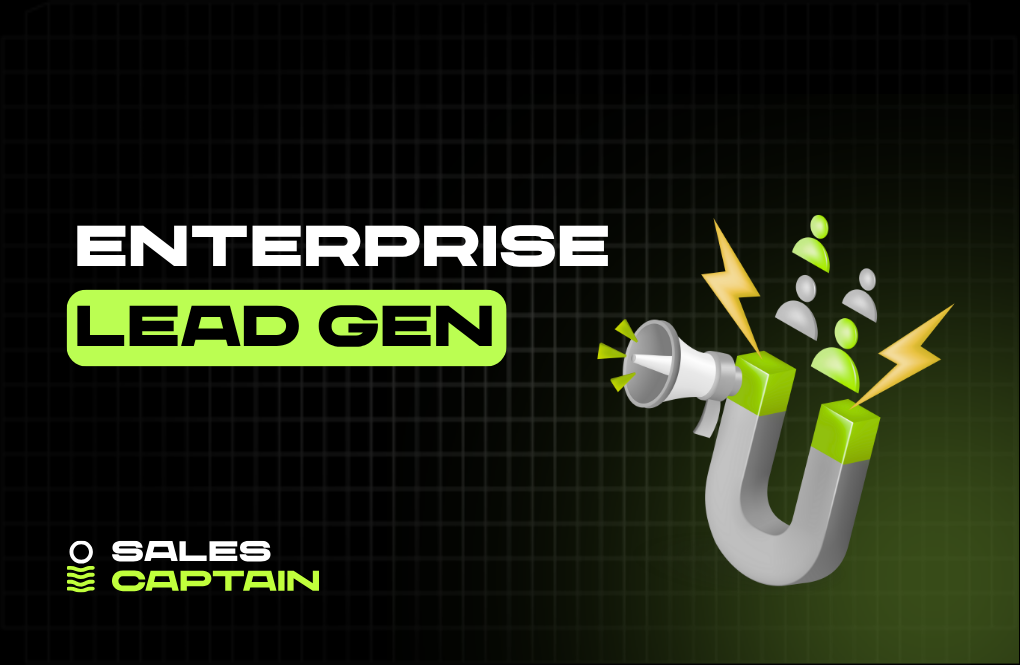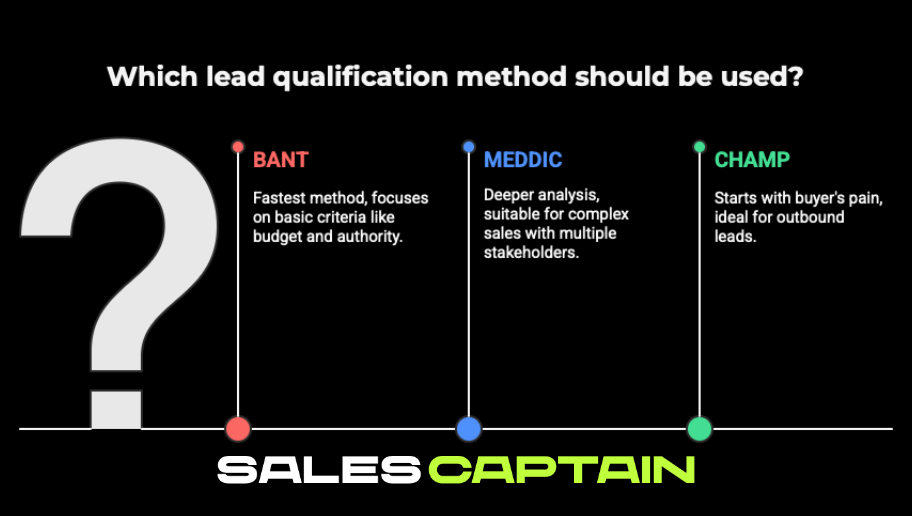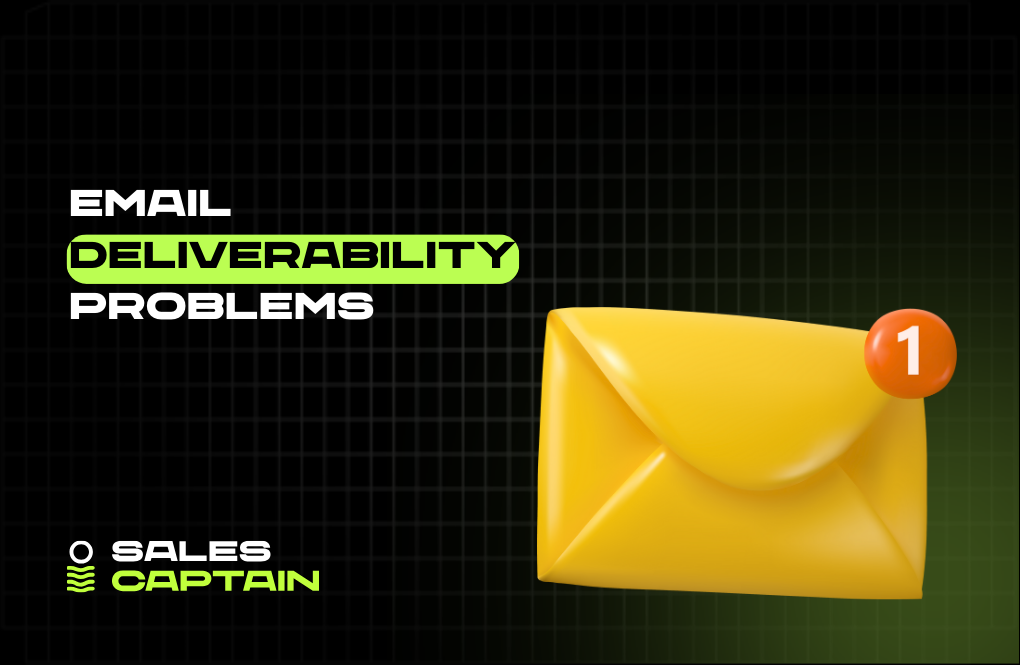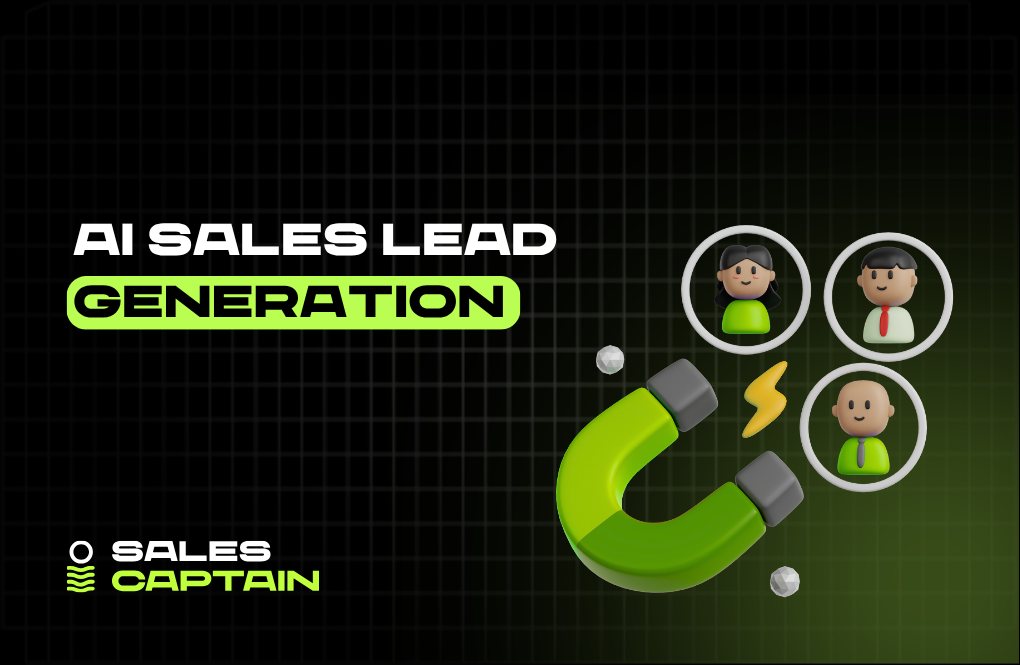

Enterprise Lead Generation: The Complete 2025 Playbook for Targeting, Multi-Threading, and Pipeline Velocity


Enterprise lead generation is a system, not a tactic. You are identifying, engaging, and converting large organizations with multi stakeholder buying committees, long sales cycles, and 6 to 7 figure contracts.
This guide shows how to run enterprise lead generation the modern way with quality over volume, signal based account selection, ABM style orchestration across roles, and AI powered workflows that align marketing, operations, and sales to drive real pipeline velocity.
What Is Enterprise Lead Generation?
Enterprise lead generation is about identifying, engaging, and converting high-value organizations into potential buyers. These aren’t SMBs or mid-market accounts. We're talking large companies, multi-stakeholder deals, long sales cycles, and 6–7 figure contracts. It’s a system, not a tactic.
The core goal is pipeline velocity across complex buying structures. You’re not just chasing one decision-maker; you’re aligning teams, navigating politics, and building consensus across departments.
How Does It Differ from Traditional Lead Generation?
Most traditional lead gen strategies prioritize quantity. Generate as many leads as possible, score them, hand them to sales, and hope for the best.
Enterprise lead gen flips that. It’s quality over volume. Hyper-targeted. Intent-driven. No guessing. You don’t “nurture” cold leads for months. You identify the right accounts and hit them with signal-based outreach that feels timely and relevant.
Also, the handoff between marketing and sales gets blurrier. In enterprise, outbound motion has become a marketing channel. SDRs aren’t running this either; they’re being phased out for workflow engineers, operators, and tools that can scale personalization without burning out humans.
Why Is Lead Generation Critical for Enterprises?
Because inbound won’t cut it at enterprise scale.
Bigger companies don’t just stumble upon your blog or download your whitepaper. They’re targeted, not attracted. If you don’t have a lead gen engine pointed at accounts with actual buying power, you’re handing market share to someone who does.
Enterprise lead generation aligns GTM systems with revenue accountability. You set the rules. You pick the accounts. You control how the pipeline is created, not just closed.
Why Develop an Enterprise Lead Generation Strategy?
Random acts of outreach don’t work in an enterprise. One-off sequences, generic ICPs, disconnected marketing playbooks, they all fail under pressure.
A strategy aligns motion. It connects tech, targeting, messaging, and measurement into one repeatable flywheel.
What Are the Benefits of a Strategic Approach?
- Focused targeting = less waste
- Clear handoffs between marketing, ops, and sales engineering
- Faster feedback loops between messaging and conversion
- Cohesive GTM workflows across tools and channels
Also, with AI-driven outbound getting cheaper and more scalable, strategy isn’t a nice-to-have; it’s the only way to compete. You’re not just fighting other sellers. You’re fighting automations spewing 10k emails per day.
Strategy protects you from blending into the noise. It forces clarity on who you talk to, what you say, and how your funnel actually produces ROI.
What Are the Common Challenges Faced?
- Misaligned teams working toward different KPIs
- Lack of signal data across tools
- bloated tech stacks with no owner
- One-size-fits-all messaging sent to complex accounts
And let’s not ignore the talent gap. As SDRs phase out, orgs need technical GTM operators, not just reps pushing templates. Most companies aren’t hiring for that yet. It’s why many turn to a cold outreach agency like SalesCaptain to accelerate execution without building it all in-house.
How to Identify Target Accounts for Lead Generation?

Picking the right accounts isn’t guesswork anymore. It’s math. It’s signals. It’s ops.
The best enterprise lead gen programs use a mix of firmographics, techographics, and buying signals to predict high-fit, high-intent targets. No more relying on ideal customer profiles written in a slide deck two years ago.
What Criteria Should You Use for Selection?
Start with firmographics: revenue, company size, and industry. Then layer in technographics—what tools they use, what infrastructure they’ve adopted.
But the real edge comes from intent signals: hiring patterns, budget expansions, recent funding, leadership changes, or content consumption. These moments tell you who’s not just a fit, but a buyer.
When you stack signals like these, you stop sending campaigns into the void. Your outreach aligns with timing, not just fit.
How to Use Data for Informed Targeting?
This is where tools like Clay shine. You can pull in real-time data from dozens of sources, company updates, job posts, tech stacks, and more, and enrich your account list with context that drives smarter outreach.
All automated. No manual research. No tabs everywhere.
Using Clay with workflows gives your GTM system a brain. It makes targeting dynamic instead of static. Even better, with the link above, you get 3,000 free credits to test how it fits into your tech stack.
What Audience Segmentation Strategies Work Best?
Enterprise segmentation goes beyond “marketing” and “IT” personas. You're not talking to a demographic. You're navigating hierarchies, motivations, and internal politics.
Successful segmentation maps buying committees, not just buyers.
How to Create Customer Personas?
Start with stakeholders, not job titles. Understand who influences the deal, who blocks it, and who signs off.
Then build layered personas:
- Economic buyer: Who approves the budget?
- Technical evaluator: who validates feasibility?
- End user: who actually engages with the product?
Each of them needs different messaging. Same company, same product, three entirely different angles.
Avoid vague personas like “IT leader” or “VP of Ops.” Use real data: LinkedIn bios, past vendors used, shared connections, and hiring trails to flesh them out.
Why Are Multi-Stakeholder Engagements Important?
No enterprise deal happens with a single buyer. There are 6 to 10 decision-makers on average, sometimes more.
Engaging just one? That’s a stalled deal waiting to happen.
Your lead gen system needs orchestration across stakeholders. It’s not about one email sequence. It’s about coordinated outreach that addresses multiple roles at once. Different priorities, same product.
This requires operating like a system, not a silo. If you're not set up to sync messaging across personas, partner with structured cold outreach agencies that specialize in multi-threaded engagement at scale.
Which Lead Qualification Methods Should You Utilize?

Warm leads mean nothing if they’re not real buyers. That’s where frameworks help.
Whether it’s BANT, MEDDIC, or CHAMP, the goal is simple: filter noise, fast.
What Is BANT and How Do You Apply It?
BANT stands for Budget, Authority, Need, Timeline. It's the fastest way to qualify whether an account is even worth continued pursuit.
Here’s what to look for:
- Budget: Do they have money?
- Authority: Are you talking to a decision-maker?
- Need: Do they clearly express a problem you solve?
- Timeline: When are they planning to buy?
Don’t waste cycles on accounts that fail two or more. BANT keeps your pipeline honest. It’s not about disqualifying, it’s about prioritizing ruthlessly.
Understanding MEDDIC and Its Importance
MEDDIC goes deeper. It’s a full-system qualification framework built for complex sales where multiple stakeholders influence the buying process.
It includes:
- Metrics: What measurable results do they care about?
- Economic Buyer: Who writes the check?
- Decision Criteria: What drives their decision?
- Decision Process: How do they actually buy things internally?
- Identified Pain: Where are they bleeding?
- Champion: Who’s going to sell this internally on your behalf?
Perfect fit for enterprise. Because it's not just about “can they buy”, it’s “will they buy, and who’s helping us win?”
How to Use CHAMP in Lead Qualification
CHAMP inverts BANT. It starts with the buyer’s pain, not your desire to sell.
- Challenges: What are they struggling with?
- Authority: Can this person move the needle?
- Money: Is there a budget, or can it be unlocked?
- Prioritization: Is solving this problem urgent or someday?
CHAMP is great for outbound-led leads who didn’t come inbound with intent. It guides the discovery call around their pain, not your product pitch.
For outbound-heavy teams, this gets a better signal from prospects earlier. Better signal means better pipeline.
What Engagement Tactics Drive Success?
Enterprise engagement isn’t about volume. It’s not about spraying your pitch across inboxes and hoping something sticks. It's systemized relevance, hitting the right stakeholder, at the right time, with what they care about.
How to Create Compelling Case Studies?
Most case studies are static PDFs buried on your website. That doesn’t work in an enterprise. High-value buyers need stories that reflect their world, their challenges, their metrics, and their internal politics.
Here’s how you make case studies work for lead generation:
- Frame them like mirrors. Industry, company size, tech stack, make prospects see themselves in the story.
- Quantify impact fast. “Saved 130K in infrastructure costs” gets attention. “Improved collaboration” doesn’t.
- Build modular formats. Long-form is fine for nurturing, but your outbound needs tight snippets. One-screens. Visual wins. Think: "Send this to your VP of Ops" level punch.
Also, consider multi-threading your case study. Run multiple angles from the same account:
- Technical win for IT stakeholders
- User adoption story for end users
- ROI breakdown for budget owners
Same story, different triggers.
What Role Does ABM Play in Outreach?
ABM isn’t a tool. It’s a muscle. Outreach aligned with ABM means you're not asking, “Who should we target?” You already know. The play is about orchestrating across personas inside that account.
At enterprise scale, cold outreach becomes an ABM play. You create campaigns for a company, not just a person. You hit four stakeholders with tailored messages, each one advancing the same narrative from different angles.
Example: IT gets a message around integration, operations hears about cost efficiency, and leadership sees strategic impact. You’re painting a picture piece by piece, where the full image only clicks when teams talk internally.
This is where operators win. SDRs blast. GTM operators choreograph.
How to Personalize Demos for Different Stakeholders?
Demos lose deals when they try to please everyone. “Universal” demos aren’t universal; they’re generic.
Tailor demos like you're building three different landing pages:
- For the budget approver: focus on ROI, vendor risk, and procurement processes.
- For the technical audience: deep dive on integrations, security, and scale.
- For end users: stories of ease-of-use, reduced workflow friction, “day in the life” scenarios.
Better yet, split the demo. Don’t invite the full buying committee to the same call. Segment based on role and tailor each experience with use cases and language that resonate.
Enterprise buyers will sit through five meetings if each one delivers real value. Trying to condense all that into one walk-through? You’ll lose them before feature three.
How to Optimize Your Lead Generation Tools?
Your tech stack isn’t just a support system. It’s your GTM backbone. If tools don’t talk, if data feels delayed, if sourcing takes hours, your pipeline suffers.
Enterprise lead gen needs infrastructure, not a pile of point solutions.
What CRM Systems Are Best for Enterprises?
Enterprise CRMs do three things exceptionally well:
- Centralize data across long cycles and many stakeholders
- Enable complex roles, permissions, and workflow logic
- Integrate with toolchains, analytics, and outbound engines
Salesforce still leads here. Not because it’s simple, it’s not, but because it’s customizable to fit how you sell. HubSpot works for leaner teams, especially with solid outbound tooling around it, but you’ll eventually hit its ceiling in multi-threaded sales.
Whichever CRM you choose, build everything around visibility and sync:
- Can marketing see outbound updates?
- Can ops track lead sources across tools?
- Can sales engineering surface prospect engagement by role?
If your CRM can’t support that, it’s just a storage locker.
Why Use Automation Tools for Efficiency?
Enterprise GTM is a coordination problem. Multiple personas. Custom messaging. Fast changes. That’s not something humans can keep doing manually at scale.
Automation removes friction, not just for reps, but across the whole system:
- Auto-enrich leads as soon as they're sourced
- Sync updates across CRMs, sequencers, and analytics
- Trigger workflows based on buying signals
This saves time, yes. But more importantly, it saves accuracy. Manual steps breed drop-off. Automation builds consistency and repeatability.
And when combined with tools that pull from real-time data (like job changes, tech installs, funding events), automation lets you act on signals in the moment, not weeks later.
Are There Specific Technologies to Enhance Lead Gen?
Absolutely. But the winners aren’t shiny tools, they’re infrastructure builders.
Start with Clay. It lets you tap into multiple data sources, enrich at scale, and build workflow logic without engineering support. Identify buyer signals across accounts, score them, and plug them straight into outbound sequences. With the 3,000 free credits using that link, you can test sourcing, enrichment, and sequencing workflows without risk.
Want real-time alerts when someone in your target list gets promoted? You can automate that.
Beyond Clay, look for:
- Signals platforms (like Bombora or 6sense)
- Data pipelines (like Segment, Census) to unify customer intelligence
- Sequencing platforms built for personalization at scale (Apollo, Smartlead)
The key isn’t more tools. It’s connected tools. Each produces data, triggering actions, fueling the pipeline.
How to Measure Success in Enterprise Lead Generation?
If you're running enterprise GTM and not tracking performance across funnels, you're not in control; you're guessing. Success here isn’t about “form fill volume.” It's about buyer progress: from cold to curious to closed.
What Key Performance Indicators Should You Track?
Your KPIs need to reflect complexity. The lead didn't just convert; five stakeholders moved at different speeds, across multiple touchpoints, before consensus happened.
Track these:
- Account activation rate: How many target accounts show any engagement?
- Stakeholder penetration: Are you reaching multiple buying roles inside each company?
- Demo quality: Not the number of demos booked, but how many included decision-makers?
- Qualified pipeline per campaign: Attribution at campaign and persona level
Vanity metrics (open rates, likes, raw meetings) lie. Enterprise pipeline doesn’t spike; it accumulates. Track lead movement across stages, time between actions, and account-level progression signals.
How to Analyze Lead Sources and Conversion Rates?
Not all sources are equal. Some bring noise. Others bring gold.
Break sources into performance buckets:
- Time-to-close
- Deal size
- Stakeholder coverage
- Repeatable conversion path
For example, leads pulled from funding-based signals might convert faster but at a lower value. Leads sourced with technographic matches tend to yield stronger stakeholder engagement. Analyze at the account level, not just the lead.
Conversion rates go beyond “lead to customer.” Look at:
- Lead to a qualified account
- Qualified for multi-threaded
- Multi-threaded to opportunity
Map where dropoff happens. That’s where you fix the system.
When and How to Adjust Your Strategy Based on Metrics?
When performance drops, don’t tweak messaging immediately. First, ask:
- Did the source change?
- Did lead scoring shift?
- Did buyer behavior evolve?
Sometimes it's seasonal. Sometimes it's a signal issue, maybe you're hitting accounts with no recent trigger events.
Run diagnostics by slicing data:
- Segment by industry or persona
- Compare new vs recycled domains
- Analyze tools used at top-performing accounts
Then rebuild motion, not just copy. If technical buyers are disengaging, maybe the demo is too commercial. If finance leaders aren’t replying, maybe your value prop doesn’t map to current budget pressure.
Tweak based on insight, not instinct.
What Common Mistakes to Avoid in Lead Generation?
Even the best systems break under the weight of bad assumptions. Enterprise lead gen requires alignment, strategy, and discipline. Miss the mark on any of those, and you end up with noise, not pipeline.
Why Is It Important to Sync Sales and Marketing?
Enterprise deals stall when workflows split. Marketing is sending leads that sales can’t act on. Sales working accounts marketing didn’t warm. It’s chaos.
Successful orgs create GTM pods, where marketing, sales, ops, and product work in lockstep. One account strategy. One measurement standard. One feedback loop.
Example: Marketing launches a campaign around cost reduction in infrastructure. Sales needs to echo that in messaging. Ops needs to track engagement across six stakeholders. If that isn’t coordinated, you're sending contradictory signals and slowing velocity.
Shared dashboards. Shared personas. Shared win/loss feedback. That’s sync.
How to Avoid Quality vs. Quantity Pitfalls?
The biggest trap? Chasing MQL volume for optics.
More leads ≠ , more revenue.
In an enterprise, every unqualified lead you chase is a distraction. Every bad-fit meeting burns time, budget, and reputation.
Focus your metric on pipeline production per account touched. Would you rather engage 30 accounts and close six, or 500 and close one?
Use filters aggressively. If a lead doesn’t match signals, ICP, or qualification frameworks, dump it. Then focus the full system on fewer, better bets.
How to Engage and Nurture Leads Effectively?
Enterprise buyers don’t move fast; they move deliberately. So your goal isn't speed, it’s sustained momentum. Keep the deal alive. Keep it progressing. Keep it relevant.
What Is the Importance of Follow-Up Strategies?
One touch isn't outreach. It’s noise.
Enterprise follow-up isn't about “touching base”, it’s about moving the deal forward with purpose:
- New data that matters to them
- Internal alignment nudges (“Thought this would help your Ops leader”)
- Validation from similar enterprise clients
The ideal follow-up sequence isn’t linear. It branches based on role, behavior, and timing.
Follow-ups that convert are built into systems, not reminders in someone’s calendar. Automate them, route contextually, and update based on engagements.
How to Use Content Marketing for Lead Nurturing?
Content isn’t just top-of-funnel. In an enterprise, it’s a deal-closing asset.
Create content libraries mapped to stages:
- “Just met you” = Thought leadership and trends
- “In conversation” = Personalized case studies and ROI calculators
- “Internal consensus” = Buyer guides, comparison sheets, security documentation
Best-performing teams atomize everything. A single whitepaper becomes five enablement pieces for different buyer roles.
And track engagement. Who’s clicking what? Who spent 7 minutes on the buyer guide? That’s a signal. Sales should know that before the next call.
Why Networking and In-Person Engagements Matter?
Some enterprise deals don’t close in Zoom. They close in hallways at conferences. At dinner roundtables. During quiet side chats between VPs.
Relationship velocity matters.
Even in hyper-digital GTM systems, face-to-face still drives trust faster than any sequence. Warm leads become active deals when chemistry happens.
Leverage field marketing. Send execs to events. Host client-led panels. These aren’t vanity plays, they’re trigger points.
Behind every enterprise sale is one internal champion who stuck their neck out. In-person? That champion gets made a lot faster.
What Are the Future Trends in Enterprise Lead Generation?
Enterprise GTM is changing. Not just evolving, transforming. Automation is replacing reps. Data is the leading strategy. And the entire idea of “outreach” is shifting from people-based to systems-based. So what’s next?
How Is AI Changing the Landscape?
AI is the new SDR, only faster, cheaper, and built to scale.
Instead of hiring people to research companies, write emails, and update CRMs, AI stacks like Clay are doing it in seconds. At full volume. Across thousands of accounts. With signal-driven logic that reacts in real time.
Example: A VP of IT at a Fortune 500 company gets promoted. Within minutes, your AI stack detects the change, rewrites the email angle, updates the CRM, and drops them into a new sequence. No humans touched it.
This isn’t theoretical. It’s operational today.
Here’s how AI is actively reshaping enterprise lead gen:
- Predictive targeting: No “spray and pray.” Tools surface accounts based on funding rounds, hiring spikes, or product launches.
- Dynamic personalization: Messages tailored to titles, industries, and even company news, without manual input.
- Workflow orchestration: Sequences that auto-pause, split-path, or escalate based on engagement so no opportunity gets stale.
And because outbound itself has become a marketing motion, AI helps scale messaging with creative inputs from marketing, not just sales templates.
The game now favors technical go-to-market operators. Not SDRs. Not generic marketers. People who understand workflows, infrastructure, and data triggers will own the new outbound era.
What Role Will Data Privacy Play in Lead Gen?
Signals are powerful, but they come with responsibility.
As lead gen stacks pull from more sources, LinkedIn, intent platforms, enrichment APIs, privacy isn’t just compliance. It’s operational. One wrong data touch and your domain reputation tanks, or worse, you invite legal blowback.
Here’s what’s changing:
- Regional regulation: GDPR, CCPA, and new global laws are cracking down on how data is sourced and used, even for B2B.
- Platform enforcement: Email providers and platforms (like Google and Microsoft) now enforce spam thresholds, content integrity, and verified domains harder than ever.
- Buyer resistance: Savvy enterprise buyers don’t tolerate shady sourcing or irrelevant outreach. You don’t just get ignored. You get blocked.
This doesn’t mean signal-based lead gen is dead; it means it needs structure.
The future is consent-aware, relevance-driven outreach. If your pipeline depends on scraping data with no accountability, it’s already at risk.
Smart teams are building frameworks for:
- Clearly defined opt-in logic
- Verified domain warm-up systems
- Source tracking for every contact used in outreach
Bottom line: Enterprise GTM is a trust exercise. Data privacy isn’t a checklist; it’s part of your brand.
FAQs
Long. Complex. Multi-threaded. If SMB sales are like closing at a coffee shop, enterprise is like landing a deal in a boardroom, with six people across three floors watching the pitch.
The enterprise sales cycle usually includes:
- Initial prospecting and stakeholder discovery
- Early intent validation or interest signals
- Several demo or proof steps with different stakeholders
- Security, procurement, and legal reviews
- Internal budget sign-off and executive approval
You’re not closing a person. You’re aligning politics. Education happens in parallel across teams. Objections come from left field. Timelines get pushed by fiscal calendars.
It’s not unusual for cycles to run 6 to 12 months. That’s why pipeline velocity matters more than activity counts.
Every touch should accelerate clarity: Do they want to buy? Can they buy? Who are we talking to next?
Start with your dream customer list, not personas, not wishful segments. Real companies. Specific roles. Verified signals.
Then reverse-engineer what gets their attention.
An ABM strategy means tightly orchestrated moves across marketing and outbound:
- Build a contact map for each account. Economic buyer, influencers, blockers.
- Curate messaging for each role. Not generic value props, role-specific hooks based on common triggers.
- Align content and campaigns to these audiences. Think: sequence messaging + display ads + case studies all hitting the same account over 30 days.
Success lives in coordination. That’s why some companies turn to cold outreach agencies like SalesCaptain, because coordinating email, social, and ads across 50 named accounts isn’t a spreadsheet job anymore. It’s GTM engineering.
Key tip: think plays, not campaigns. Every account should feel like it’s in the middle of a narrative, not just getting emails.
Your stack doesn’t need to be big. It needs to be connected.
Start with sourcing and enrichment. Tools like Clay let you:
- Enrich thousands of accounts with real-time data, instantly
- Trigger workflows based on hiring, tech stack changes, and buyer actions
- Build outbound sequencing logic across multiple personas, fast
Bonus: Use the link above for 3,000 free credits to test workflows without blowing your budget.
Then layer in:
- CRM: Salesforce still rules for enterprise. HubSpot, if you’re a learner.
- Sequencer: Smartlead or Apollo for personalization at scale.
- Signal platforms: Think 6sense or Clearbit for engagement scoring and real-time account monitoring.
- Orchestration: Zapier or Make to automate across tools, with logic-based triggers.
The real magic? When these work as a system.
Your CRM isn’t static. Your enrichment isn’t one-time. Your sequences aren’t fire-and-forget. They talk to each other. Update automatically. React dynamically. That’s enterprise GTM.
If managing all that sounds like a second job, that’s the case for hiring technical operators, or working with a cold outreach agency like SalesCaptain that already has the architecture in place.
RELATED ARTICLES
Lorem ipsum dolor sit amet, consectetuer adipiscing elit, sed diam nonummy nibh euismod tincidunt ut laoreet dolore magna aliquam erat volutpat.




.jpg)





